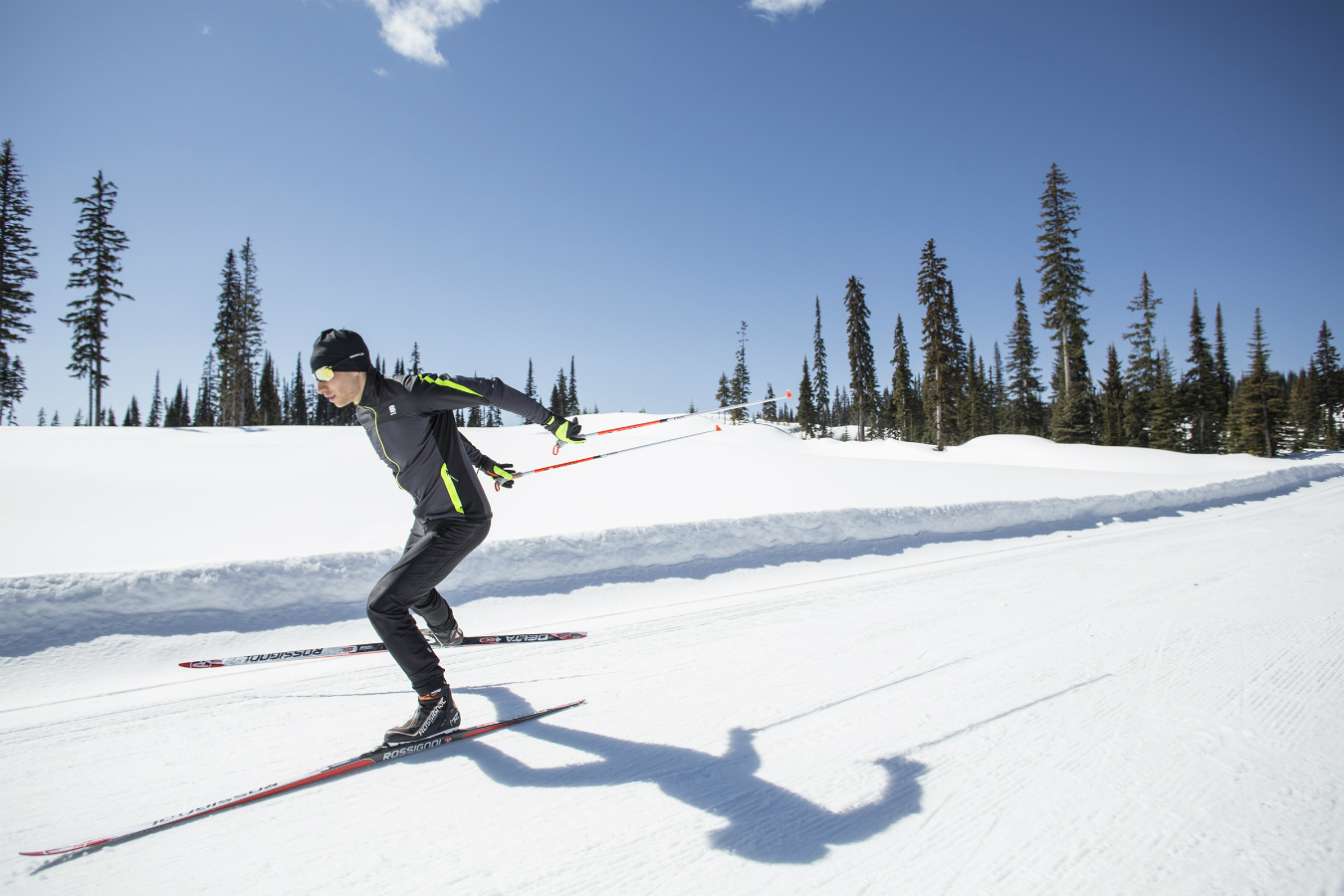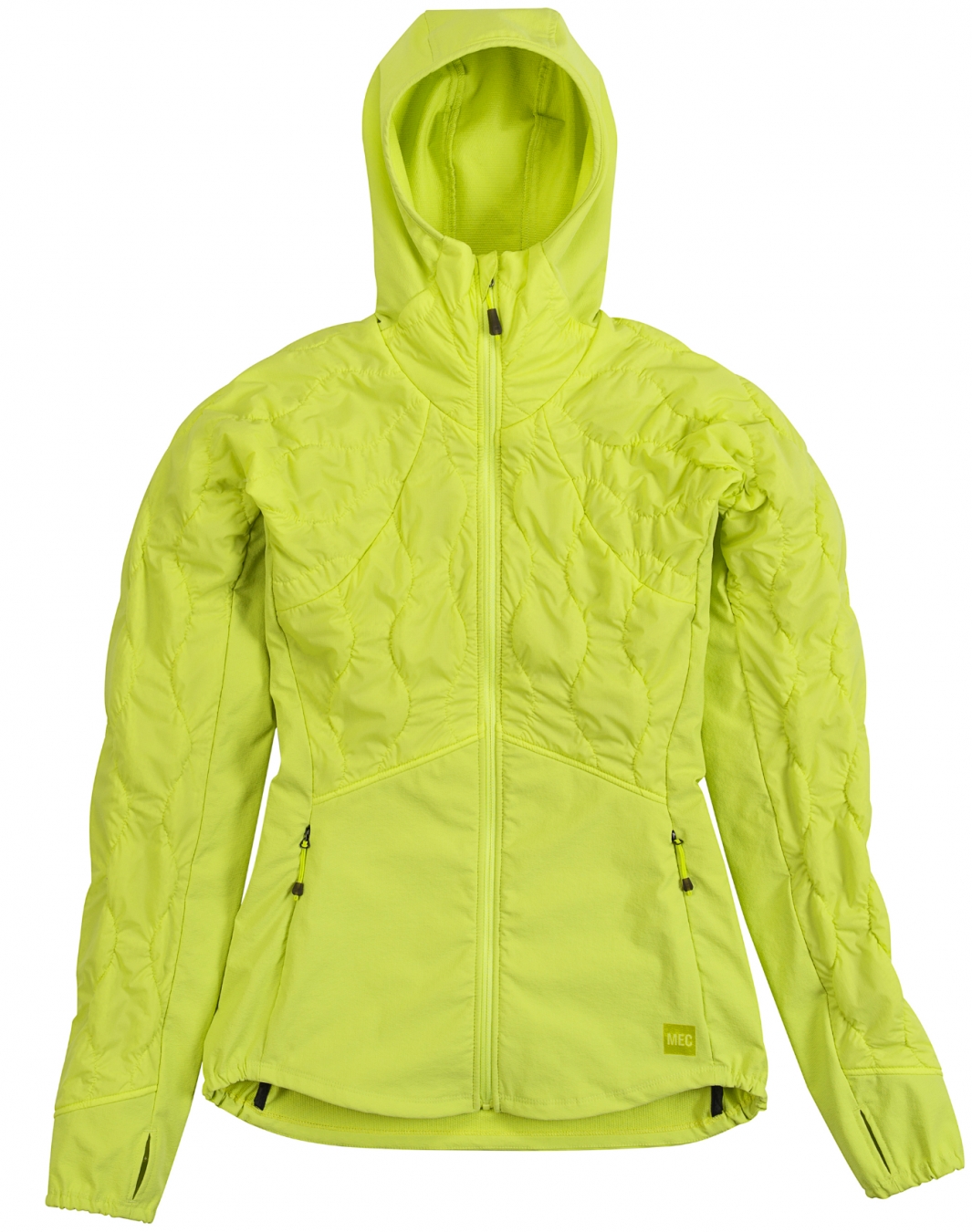The athletic landscape of the Lower Mainland could easily be divided into tribal territories: the downhill devoted, the backcountry bound; the climbers, the hikers, the yogis. There are those who run, those who walk, and those who just live for the trending “Athleisure” look. Across the nation, these groups summit at Mountain Equipment Co-op (MEC).
“We call it sport-to-life,” says active lifestyle designer Janna Bishop. “It’s about people being able to wear versatile pieces that go from the gym to errands, coffee, groceries, and even work. These pieces are functional and comfortable.” In fact, the brand has been producing versatile, quality garments since its inception in 1971. Today, the manifesto is the same but the following is much larger. It has to do with the fact that the company continues to offer products that last in a market blanketed by planned obsolescence. “Our customers don’t want to buy new gear every year. They’re looking for value,” says materials developer Kerri McKenzie.
The co-op’s members are committed, and their devotion allows MEC to reach further: the company donates one per cent of its revenue to non-profit organizations across the country, sources Merino wool and down responsibly, recycles polyester, and ensures over 70 per cent of its textile processing adheres to Bluesign standards (a system for sustainable and safe production). It’s a commitment that also means the company compromises where it has to. “We don’t run certain colours—high-visibility neons and saturated blacks—because the dyes required to make them are toxic,” explains Bishop.
The company’s garments are packed with technology, and many are tested in the headquarters’ basement lab where microscopes and an array of stress-inducing machines line the perimeter. The autumn and winter collections focused on aerobics and hybrids. “Men’s and women’s garments are different,” says Bishop. “Men’s incorporates more of the highly-breathable knit. Since [men] tend to generate more heat, they need more places to vent that heat. Women experience a lot of heat loss through the neck and collarbone region, so that’s why you see woven fabric in some places and insulation in others.”
One prime example of these design considerations is backcountry apparel designer Spring Harrison’s Obsession hoodie, which won fabric manufacturer Polartec’s Apex Award for innovation. The abrasion-resistant garment was built for the backcountry, its silhouette is contemporary and slim, and the hood fits under a helmet. To transition into spring, Rocka Nordic Tights, a Mission Possible Longsleeve shirt, and a Backbeyond Jacket are smart purchases. And those hiking in for first lines can pick up the Iconoclast Pack, which addresses every concern one could possibly imagine, including multiple ways of carrying skis or a snowboard and a drip system for wet gear.
Those just starting out need not be hesitant, tribe initiation doesn’t have to encompass a trek into the backcountry. MEC’s trademark Uplink Jacket and backpacks are as recognizable as Lululemon’s yoga pants and every bit as easy to wear. “People look at the mountains as being aspirational,” says McKenzie. “Not all of us are going to climb those mountains but we want to look and feel as though we’re part of that dream.” The MEC mentality is definitely about a sense of community. No one gets left behind. “We’re all in this together,” adds Harrison. “It’s about the reward of being in the outdoors. Conquer it, or just be there.”
Click here for more Active Vancouver stories.













